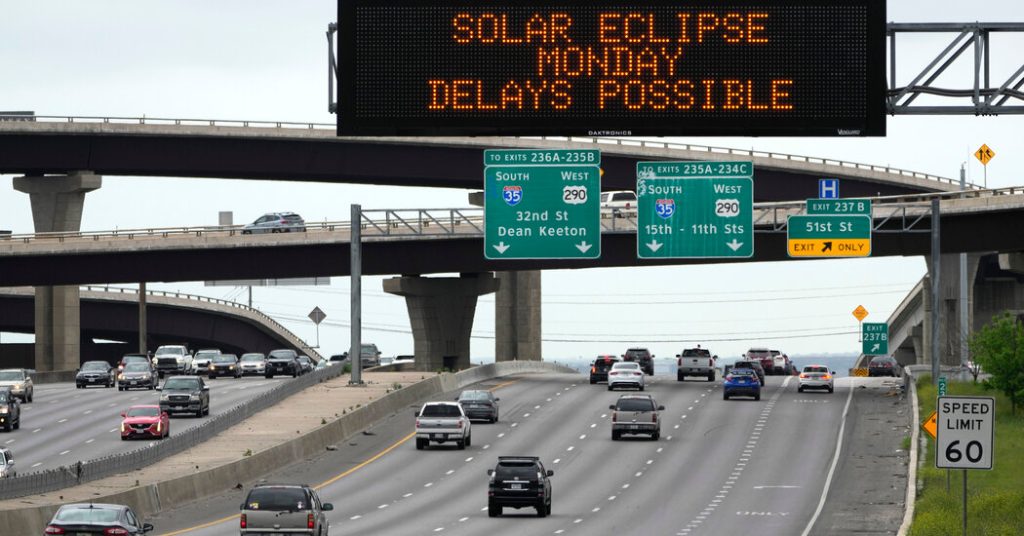On Monday, millions of people across the United States, Canada, and Mexico will experience a total solar eclipse. The path of the eclipse spans from Mexico’s Pacific Coast to the fringes of Atlantic Canada, passing through major cities. Authorities are preparing for an influx of visitors seeking to witness this rare celestial event. This will be the first total solar eclipse visible from the United States since 2017, and the next one visible in the lower 48 states will not be until 2044. Many people are expected to take in the view, with more than twice as many people in the eclipse’s path compared to the 2017 event.
Eclipse-gazers are eagerly checking forecasts and hoping for clear skies on Monday afternoon. Cities have canceled school and distributed protective glasses to ensure the safety of those viewing the eclipse. Special events are planned across North America, including street parties in Mexico, a zoo study in Indianapolis, and a display at Niagara Falls. In Mazatlán, hotels are at capacity, cruise ships are offering special eclipse experiences, and tourists are flocking to the coastal city to witness the eclipse firsthand. NASA scientists are optimistic about favorable weather conditions for the livestreaming of the eclipse from Mazatlán.
In Dallas, many are resigning themselves to not being able to see the eclipse due to weather conditions. Some are already talking about traveling to see the next eclipse in Iceland or Spain in 2026. Authorities in Canada’s Niagara region have declared a state of emergency to ensure safety and resource availability during the eclipse. In New York State, officials are preparing for the eclipse as they would for a weather catastrophe. New York City will experience a 90 percent eclipse, outside the path of totality. Jessica DeCerce, known as the state’s “eclipse czar,” has been planning for potential traffic gridlock, facilities shortages, and other issues.
Experts have suggested that the rainbow in the mist of Niagara Falls will turn pink during the eclipse, adding another element of wonder to the viewing experience. Visitors to Niagara Falls, like members of a rock band from Connecticut, are debating where to view the eclipse from, deciding between a friend’s backyard or the state park. In Indianapolis, the city’s zoo is preparing to distribute thousands of eclipse glasses to visitors and ensure that automatic lights do not come on during the event. Zoo officials are curious to see how the animals, like the macaws, will react to the eclipse, with the potential for changes in behavior due to the atmospheric effects of the eclipse.


